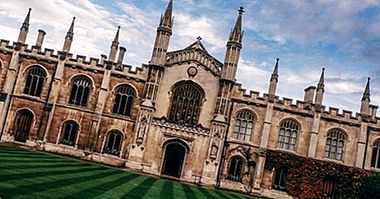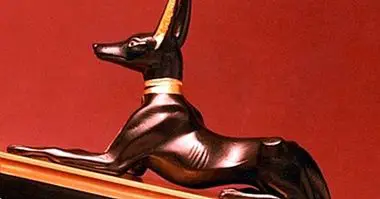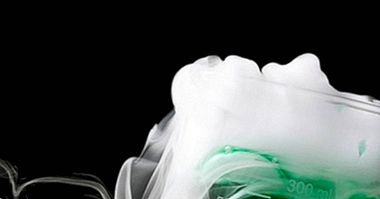How to cite a web page with APA regulations, in 4 steps
When we do a job or we draw up a scientific document , we often have to use concepts, terms and definitions that have been developed by other people, or we find that work done by others supports research or own theories.
In order to reflect the authorship of these concepts, provide the vision of a specific author about a reality and validate the information we provide we must cite the sources from which we have extracted the information .
There are numerous formats that can be applied when making citations. One of the most known and used, especially in the world of psychology, is the APA format .
- Related article: "Psychology gives you 6 tips to write better"
What does it mean to quote?
The word quote has numerous meanings, such as warning, making a judicial notice or summoning someone to go at a certain time to a specific place. But nevertheless when we refer to making a citation at bibliographic level we are referring to explicitly mentioning a source from which certain information has been extracted.
Citations can be made both at the time of literally employing the same words as the original author or author of an idea or to support with their works the arguments that have been used throughout the document that is being created. Sometimes it can also be used to show the opinion of a specific author regarding a specific topic. The citations are usually done both inside the text and in a section at the end of the document, the bibliographical references.
- Maybe you are interested: "12 professional outings of Psychology"
The APA regulation
One of the best known formats when making citations is the APA format, which was created in 1929 by different professionals from different branches, especially from the world of psychology. This style receives its name from the American Psychological Association, an association that developed it .
The purpose of this format is to forge a model that allows the expression of ideas and concepts in a precise and clear manner, without major complications for the reader when it comes to identify and understand both the concepts and their origin .
Since its conception, the APA format has evolved over time, introducing small modifications that have taken it to its current version. It is one of the most used formats when quoting and not only in the different branches of psychology but also many other scientific disciplines.
How to cite webs in APA format
Making a citation in APA format is easy or , since it is based on having clear the format to use and apply it. However for this you have to know how to do it.
Below you can see a few basic steps to quote correctly in APA format, specifically when it comes to resorting to a web page as a source of information (although the differences with other types of sources are minimal).
1. Extract the basic information from the original text
When we consult a text and we take it as reference or we use an author or his theory we must extract different information if we intend to quote it and correctly reference it. The surname and initial of the author or authors, the year of publication, the title of the latter, if it belongs to any manual, journal, thesis or web and the name of these, the publisher if there is one, the city and if the case, from which page to which page the information can be found.
In a web page we will usually find only a part of this data , but sometimes you can find books and magazines published on the web that may have them.
If we do not have a name or date, can be specified by indicating Unknown or Anonymous instead of the first or s.f. (undated) if we do not have the second one.
2. Keep in mind the web address and the date
In the case that concerns us, the one of a web page, we will have to extract the URL or web address in addition to the previous thing so that possible readers can go to it if they want to consult it, as well as the date on which we have collected the information from her . This last one is more important than it can appear, especially if we consider that it is possible that the authors of a page decide to close it or delete content for a specific reason.
3. Appointment in the text
If throughout the text we want to refer to an idea of a specific author or support our argument with the work done by other people, we have to make a citation.
When making an appointment throughout the text, it is sufficient to place in parentheses the author's first surname and the year of publication, separating both data with a comma. If there is more than one author, the surnames of all the authors separated by commas should be placed at first (except in the case of the last and penultimate, which are separated by a "and" or "&").
If you cite several times , from the first one, only the surname of the principal can be used and add "et al." or "et al." to refer to the existence of more collaborators. This aspect is done in the same way for both citations of articles and books as for web pages.
The basic structure is the following: (Author's last name, year of publication). For example, to quote this article throughout a text would suffice to put: (Castillero, 2017).
It is also valid to put the author's last name in the text if we make a literal or paraphrased quote, placing the year in parentheses. Using another different example we could put: "As indicated by Einstein in his theory of relativity (1915) ..."
4. Bibliographic references
Once the text is written It is necessary to make a section with the bibliographical references that have been used, at which time we will use all the information previously collected in the first two points. It is necessary to take into account that if there is more than one they have to be ordered alphabetically.
To correctly reference a web page , must proceed by first placing the author's last name, followed by a comma and after it the initial of his or her names followed by a period. If there is more than one author, they are separated from each other with a comma or semicolon. In this case, all authors of the source itself should not appear.
The year of publication is then placed in parentheses, followed by the parenthesis by a period. Subsequently, the title of the article in question is put in italics, followed by brackets of the type of publication that it is.
After that, it is detailed which web page has been collected, a URL that will be introduced by a particle such as "Recovered from", "Available in" or "Consulate in" and then the URL in question. After that, between brackets, the date of consultation will be available.
The basic structure would be the following: Surname, Initial name. (Year). Title in italics. [Type of publication] Available at: URL [date].



















